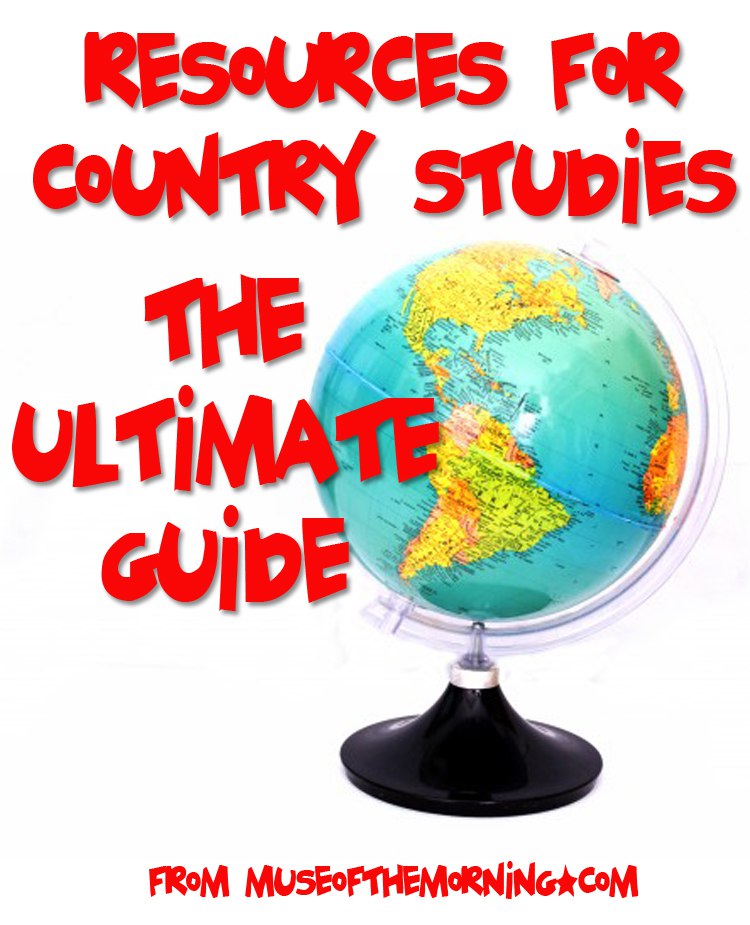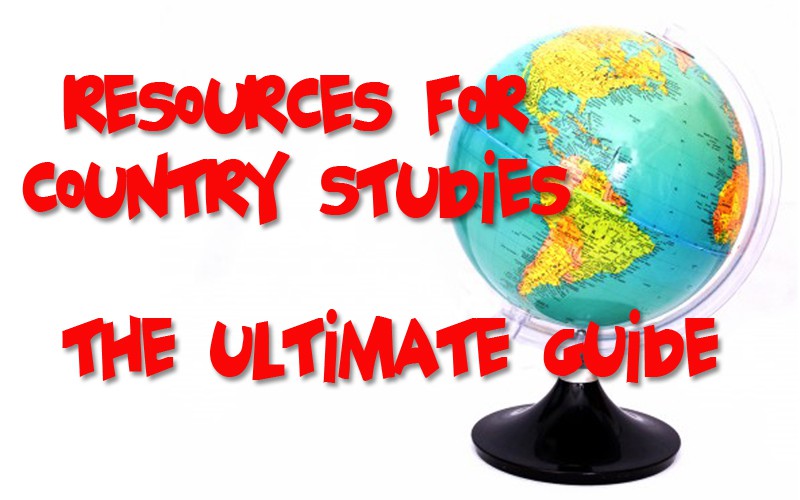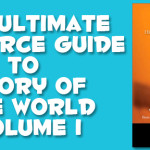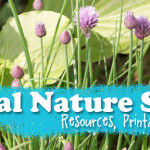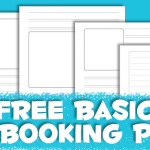This year, we’re doing some studies of different countries and cultures. We’ll start learning about a country/culture and do a little learning about it every week until interest starts to peter out. Then we’ll switch to another.
How This Post Works
Each title in bold is a facet (in no particular order) of different countries that I think are important to explore and learn about. Under each title, if I can find it, there will be a place to start your research. To get more specific, you’re going to find that google is your best friend. You can search for “the facet you’re learning about + the country you’re studying”. If you add “for kids” after that, I’ve found that there are very often kid friendly resources that will pop up. Also, most countries have some sort of website to give information to tourists, this is a perfect starting point!
In general, we are creating notebooks about each country that we’re studying, so under each title, I am providing a basic notebooking page that I created for the topic, or a link to one that is especially nice. These are the very basic activities that can be done for each topic. After that, if I can think of them or find ideas for them, I will provide links or ideas to get a bit more creative and interesting with the project.
These are all general ideas that will fit any country that you learn about. This page is designed to help give you a framework or starting point for learning about different countries and cultures. For us, as we learn about the different facets, I hope that interest will be sparked to help us delve further into specific areas, creating more dynamic learning experiences.
Think about what you want to know
A great way to start any unit is to use a KWL chart. It has a section for writing out what you already know about the topic. Then you can brainstorm and come up with ideas for what you want to learn. Finally, it has a section for following up at the end with what you learned about the topic.
Download my basic KWL chart here (PDF).
Check Your Local Library
* Check out the “Dear America” series – there are books about women and girls from all sorts of cultures and time periods.
* Head to the countries section in the children’s area of your library. They will probably have a bunch of general purpose books on all the different countries you can imagine!
General Resources
* Go in depth with Virtual Tourist. The most important tabs I noticed are “things to do”, “transportation”, and “local customs”. Lots of neat photos too!
* Global Trek is a fun interactive site to learn lots of info about a lot of different countries.
* Lonely Planet is a fun website to search through. It has a lot of dynamic pages and interesting articles – go to the very bottom, click on the continent and then look for the country you’re studying.
Record information using a basic notebooking page or in another creative way!
Watch Some Videos
Documentaries and videos are awesome ways to see the culture and country in real people.
* Documentary Addict is a fun site with lots of documentaries on different countries and topics.
* Here’s Lonely Planet’s YouTube Channel- there are lots and lots of excerpts from their videos
* Rick Steves mainly goes around Western Europe. Here are his full videos.
Write down what you learn on a basic notebooking page.
Start With the Basics
WEBSITES: Here are some websites to get started learning a variety of information about a bunch of different countries.
* Start by reading lots of facts and some brief history of the country at World Atlas
* Ducksters. Click on a country to get some basic information about it!
* National Geographic Kids will have lots of information to start with!
RECORD INFORMATION: I’ve created a simple page for recording some of the basic information (PDF). I encourage Lil’Miss to decorate the page with some motifs that she might have seen while learning the basic facts. There is a world map on this page, so it may fulfill the next facet as well.
You can always use a basic notebooking page if they work better.
Find it in the World
MAPS TO LOOK AT AND DOWNLOAD: Find the country on a world map and color it in.
Important Places In The Country
PRINT A MAP OF THE COUNTRY: Here at World Atlas.
RECORD: Mark important places and geographical features as you learn about them. Mark the capital, other big cities, rivers, mountains and other important features.
The Flag
RESEARCH: Find out what the flag looks like at World Atlas. On most countries, there is a meaning of what the colors and motifs mean. If there isn’t, you can find that information here.
RECORD: I’ve made a very simple notebooking page that has space to recreate the flag and then write about it (PDF) down below. Download the page here (PDF).
IMAGE SEARCH: Find an image of the country’s flag to print out.
COLOR: These are black and white versions of country flags for coloring.
MAP ACTIVITY: Print out and cut jigsaw puzzles from many different country flags.
Currency:
RESEARCH: Search Google Images for pictures of the currency from the country you’re researching. Investigate who is on the money. How is it different from your money? How is it the same? What is special about it?
RECORD: Print out the pictures and paste it at the top of a a basic notebooking page. Write a little about it.
RUBBINGS: If you can get a hold of some actual coins from the country, do some crayon rubbings of both sides of the coins.
Food & Drink:
RESEARCH: Check out this site with some countries and their best known cultural food. Here are some more pages of foods from around the world.
RESEARCH: Here’s another good site for learning about food and drink in other countries.
RECORD: Print out this recipe card (PDF) and write out a recipe that you find interesting. If they call for specialty ingredients, draw them. Or draw all the ingredients. Or draw each step in the recipe.
TAKE IT UP A NOTCH: Take a sheet of construction paper to use as placemat. Write down a traditional recipe and glue that to the side. Draw or cut shapes from construction paper to represent the recipe. Paste it or draw it on a plate or whatever it is that the people from that country would serve it on. Draw utensils that it would be eaten with- chopsticks, fork, fingers, etc….
Holidays and Celebrations
RESEARCH: This website share information about how some cultures celebrate certain holidays. It is definitely not an extensive list. You might want to try Google.
RESEARCH: This site shares about some holidays that are well known in a single country or area.
RESEARCH: Wikipedia also has a list of holidays sorted by country.
RECORD: For this one, since I won’t know what holidays are important until we dig into the research, I’m going to recommend using a basic notebooking page and either use clip art that you find or have the child draw some pictures.
Family Living
A DAY IN THE LIFE: Check out this amazing archive of videos of a day in the life of people all over the world.
CULTURAL ETIQUETTE: Locate your country on this map and learn in depth about cultural etiquette there.
GAMES & PASTIMES: Here is a page with information on games around the world, sorted by game.
RECORD: Write down what you learn on a a basic notebooking page.
Time Zone
RESEARCH: Find out what the time is right now in the country you’re learning about.
RECORD: Print out this clock page (PDF). Mark the time where you are and the time in the other country.
Click here to download the page.
Languages
RESEARCH: Learn some basic phrases in all sorts of languages!
RESEARCH: OpenCulture has a list of languages to learn for free, sorted by language. Or for learning a language in depth, try duolingo.
RECORD: I made a really simple page for writing vocabulary that you learn. You can write the word in your language on one side and the word in the other language on the other side.
Download the page here (PDF).
Landmarks, Monuments, Geography, etc…
RESEARCH: A lot of the links in the first section will help you find out information about these topics.
RECORD: Print out these mini books (PDF). On the outside of each one, write the name of a mountain, landmark, river, lake or other physical feature. On the inside, draw a picture and/or write a little something about it. Paste the mini books on a page in the notebook. You can sort them by which type of feature it is.
Native Animals
RESEARCH: Research the animals that are native to this country. Here’s a list of endangered animals, listed by continent.
RESEARCH: Look up the national animal of the country and learn about it.
RECORD: Write out what you learn about the animal on this basic page. The first page of this printable is even simpler. The notebooking printable at the end of this post is also nice.
Traditional Dress
RESEARCH: This is a starting point for learning about national dress.
RECORD: Here’s a page I created for drawing the national dress (PDF). Details can be written on the lines below the figures.
Download the printable here (PDF).
Homes
RESEARCH: Take a look at some homes around the world. This is by no means an extensive list, but its cool to look at. This might be a good time to use our friend to look up houses in the specific country you’re researching.
RECORD: Here’s a simple page to draw some of the houses (PDF) that you learn about.
Download the page here (PDF).
RECORD: Another way to document a couple different types of houses is simple notebooking page (PDF) I made with space for two images.
Download the page here (PDF).
Folk and Fairy Tales
RESEARCH: Read a whole bunch of folk and fairy tales from different countries.
RECORD: I made a story mapping page (PDF) to record information about stories you find.
Download the page here (PDF).
Religion, Philosophy and Spirituality
RESEARCH: Read about which religions are prominent in the country you’re learning about.
RECORD: Create a pie graph of the religions in the country. Print it out and include it in the notebook.
Expressive Arts
RESEARCH: I wasn’t able to find general websites dealing with arts in other countries. Let’s head to google! Here are some ideas of words to look up. Add “in XX” – with XX being the name of the country you’re researching – after each term.
traditional art, traditional music, traditional theater, traditional drama, artists
TRADITIONAL DANCE: Learn about traditional dances in other countries.
RESEARCH MUSIC: Learn about music around the world with Hobgoblin Glossary of Music.
Listen to music from around the world with this you tube channel.
RECORD: So far, I think the best way to write about most of the art and music is to use one of my basic notebooking pages and draw or write about how the work made you feel, represent what you saw in the artwork.
MAKE REPRESENTATIONS: If the country has a lot of famous mosaics, maybe you could explore mosaics. If they have amazing pottery, create some pottery in a similar style. Try to be as authentic to the original styles as possible.
Influential People:
RESEARCH: On Biography.com, you can search by nationality (hover over nationality on the left side and then choose your country). Then click on the person you want to learn about to read their biography.
RESEARCH: Look at Wikipedia’s List of People by Nationality to find someone to study. Follow the links to learn more!
RESEARCH: A little bit offbeat- check out Rejected Princesses. Locate your country on the map and see if there are any historical, mythical or literary female figures from the country and see what they did. The author of this site takes great pains to research the heck out of the women he writes about.
RECORD: Here’s my biography notebooking page (PDF). It’s very simple, but allows for a lot of creativity.
Download the page here (PDF).
Current Events
RESEARCH: Learn about current events in the country that you’re learning about. On this website, click on “region” along the top and then click on the country you’re studying.
RECORD: This is a page you can write about the news on.
Combine What You’ve Learned
SCRAPBOOK: On a sheet of cardstock, have the child create a “scrapbook page” as if they had actually visited the country. Below are some print outs that you might want to use:
– Print out these photographs (PDF) and draw some sights that you may have seen in the country.
– Here are some tickets (PDF) to print out and design to look like they are to events or attractions that you might have seen.
– Design a brochure (PDF) to one of the attractions you might have visited.
Finish it up
For our country studies, we put all the information gathered into a two pocket binder folder. It has a nice cover for decorating and then all the folders go on a shelf to look back over and add to over the years!
So, what country are you studying? Do you have some fantastic ideas for recording the information that you learn?
If you have any resources that cover a bunch of countries, please share it in the comments and I’ll add it to the list! Thank you!
This post was published on Muse of the Morning.com
